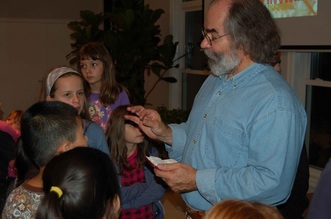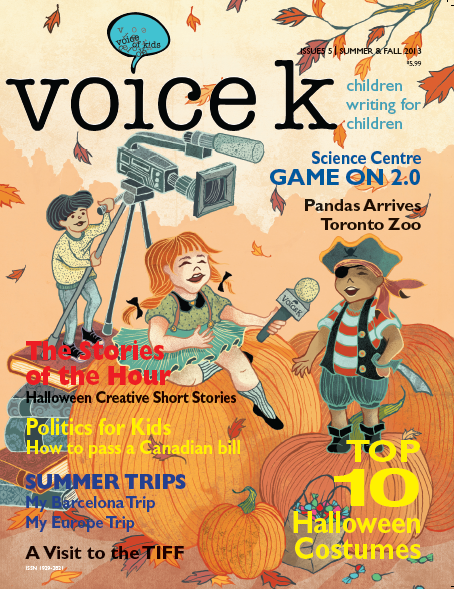 Voice K Journalists Amelie and Michelle
Voice K Journalists Amelie and Michelle By: Amelie Zhou & Michelle Zhou
It was a cloudless night on October 12th. My sister and I went to Astronomy Days at Heartland Forest, Niagara Falls as Voice K journalists.
The trip involved driving on dusty gravel roads. The place looked very nice, except for the mud. There were a lot of people setting up telescopes in front of the building. There were many nice volunteers, and we found out that most of them were retired. They told us that they love astronomy and that they wanted to get kids interested in astronomy.
While we were talking to some of the volunteers, a nice man in his 50s walked in. He was the speaker and his name was Dr. Brian Pihack. He’s the president of RASC (Royal Astronomical Society of Canada) at the Niagara Falls Centre.
Dr. Pihack told us he got his first telescope when he was 12. We spent a lot of time talking to him. Anybody could tell that he loves astronomy. When we asked him about his role in this activity, he told us it wasn’t a job, it was a hobby. He told us many facts about astronomy. He said that he got all the information for his speech from books, the internet, and universities. When we asked him how much practice he needed for his speech, he replied, “Honestly, none. When I look at a picture, I know what I’m going to talk about.”
Then, we all settled down for a lecture in the nice and comfortable lobby of the Nature Centre. Dr. Pihack started by introducing the galaxy and our solar system to us. He showed us where we were and compared Earth to the Sun. Then he compared the Sun to a red giant, Betelgeuse. The Sun was humongous next to Earth, and Betelgeuse was humongous next to the Sun, so imagine how small Earth must be next to Betelgeuse!
Dr. Pihack gave us some information about each planet. He talked more about Jupiter and Saturn, and skimmed over Neptune, Uranus, and Pluto.
“If you and I board a Boeing 747 and fly to the Sun, how long will it take?” Dr. Pihack asked the crowd.
There were a wide variety of answers from both kids and adults ranging from one hour to a zillion weeks. None of them got the correct answer or was even close! The right answer was 17 years. Another question people did not get was “How many planets are there in the solar system?” The answer was 13. There was one really hard question Dr. Pihack said that no one should be able to answer. He asked the audience what Herschel, the person who discovered Uranus, was going to name the new planet. Michelle, a Voice K journalist, surprised him by saying “George.” Everyone was laughing at the answer, but she was actually right!
Later in the lecture, Dr. Pihack showed us beautiful pictures of aurora borealis that can be seen with the naked eye in Niagara Falls. Everyone was amazed. The aurora borealis were beautiful; they were better than the ones at the North Pole. The Northern lights at the North Pole are one solid color. These, however, had blues and indigos, violets and greens. Dr. Pihack told us how to capture these photos on our own camera. He told us that if we want to check if we can see the aurora in our backyard, we can go to http://helios.swpc.noaa.gov/ovation/, search for ovation, then find a photo of a globe. If you live above the red line, you can see the Northern lights.
 Dr. Pihack showing us a meteorite!
Dr. Pihack showing us a meteorite! After the lecture, we went outside to gaze through the telescopes. Most of them featured the moon. There were both big and small telescopes. There was even a pair of binoculars on a tripod! There was one that showed Saturn. It wasn’t really clear; it looked teensy-weensy, a bit blurry, and gray. It looked like a dull donut. Some people said, “I only see a gray dot.” The moon was most impressive with the shadows and the craters. Even though some of the stars did not show up well, we still had a lot of fun looking through the telescopes.
Visiting Heartland Forest would make anyone’s day. It was a great experience. Heartland Forest is a definite place to have fun. If possible, try visiting it. When we came back to the GTA, I started missing Niagara Falls. It was a lot quieter and had fewer disturbances there.

 RSS Feed
RSS Feed
